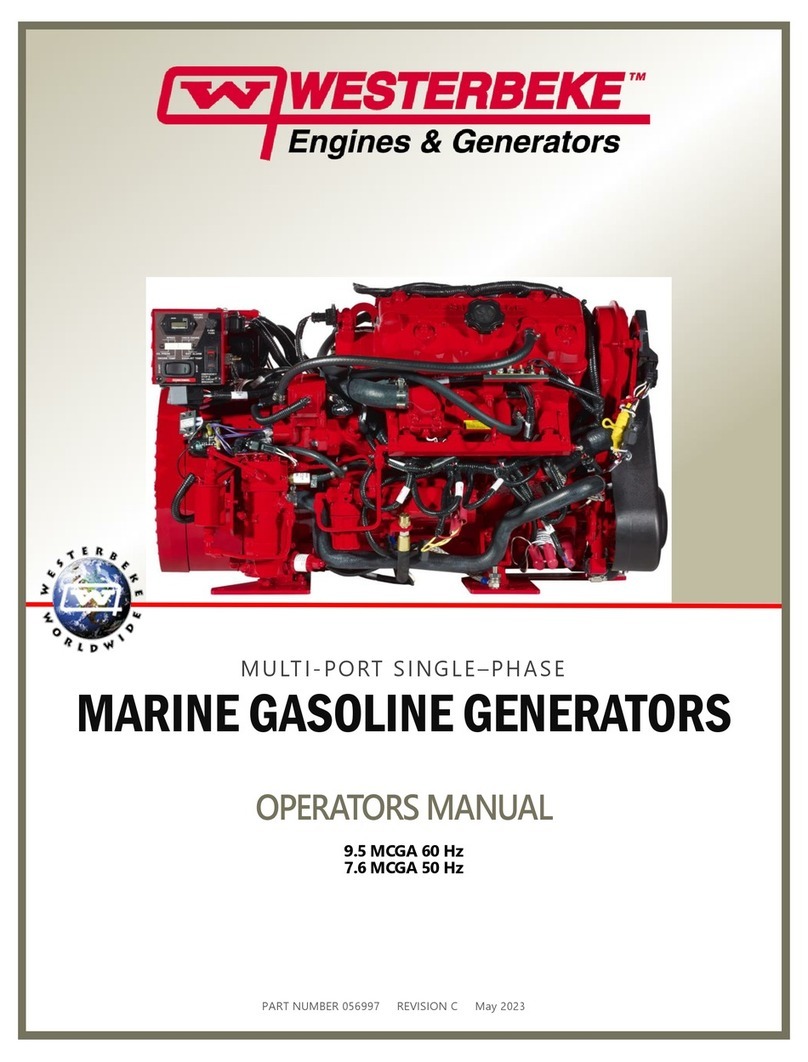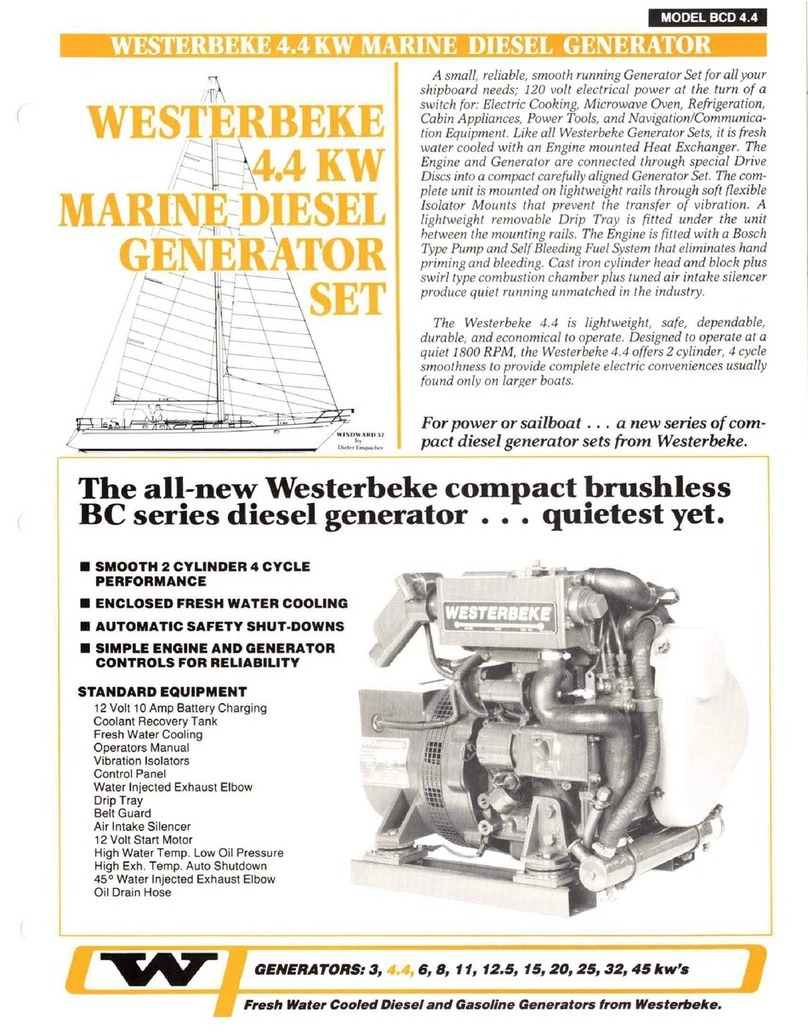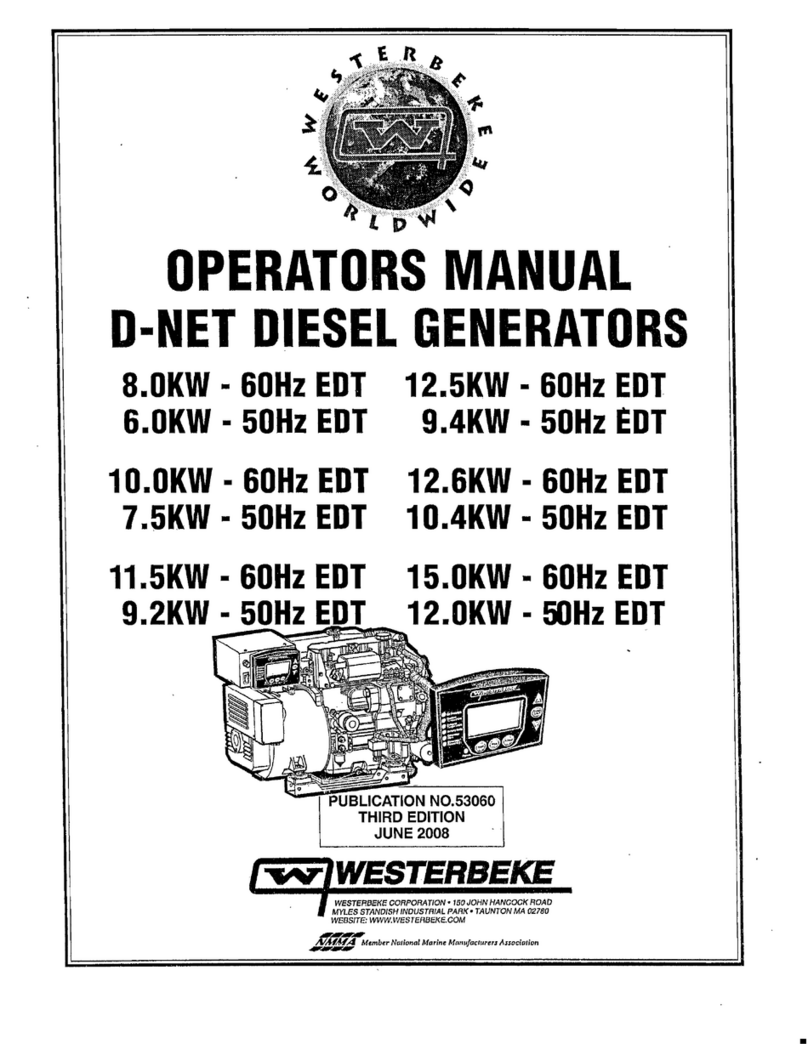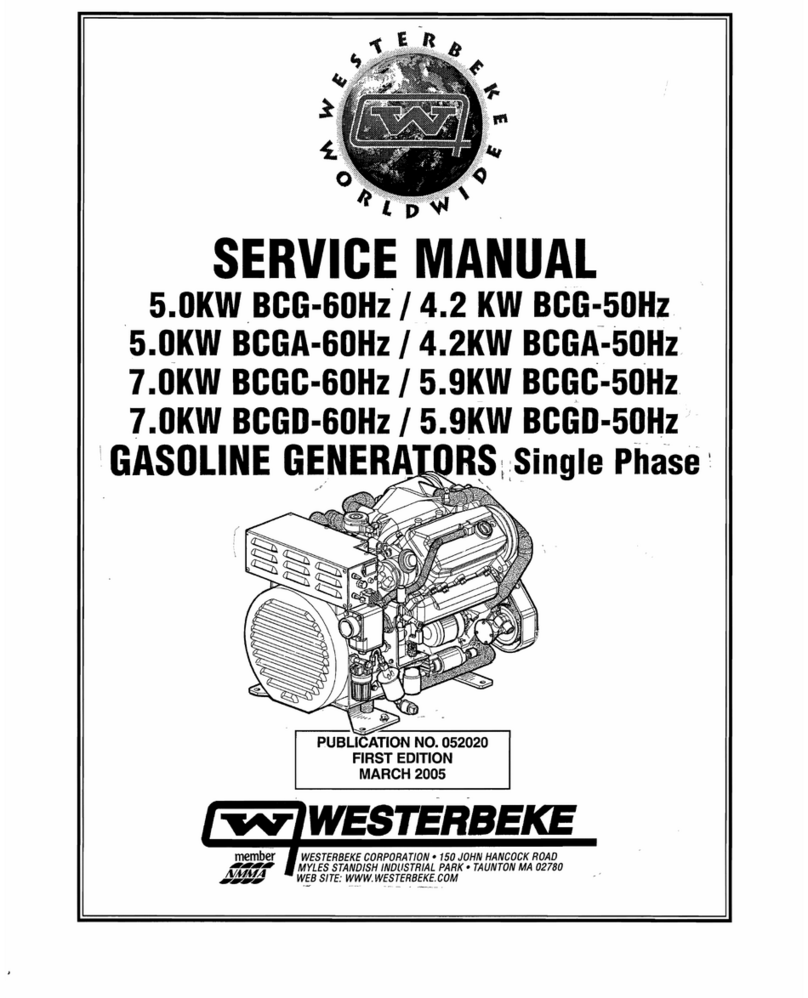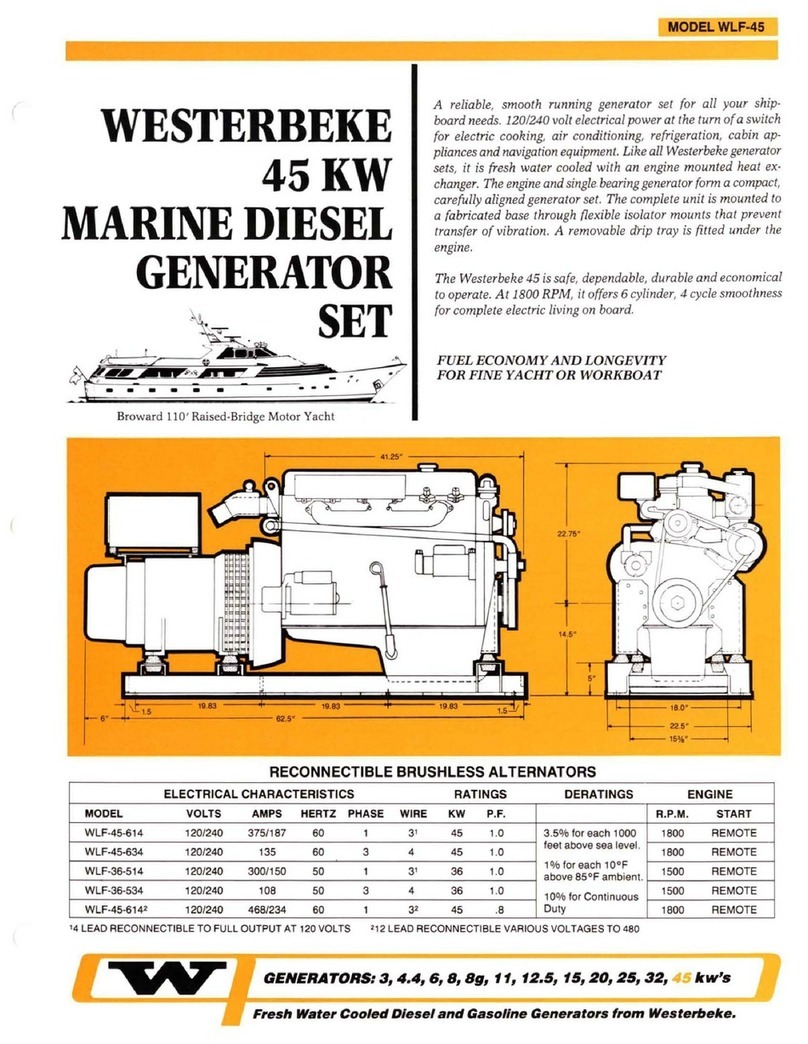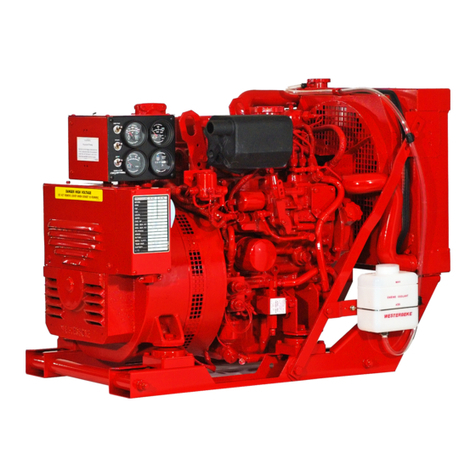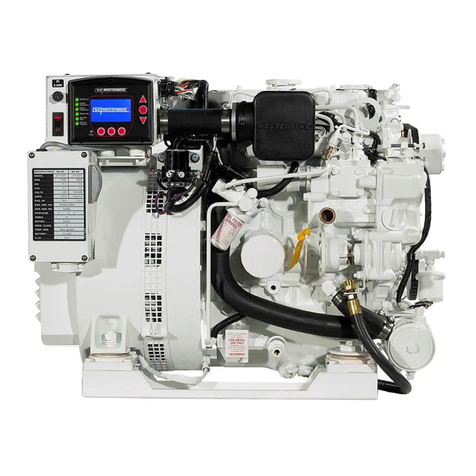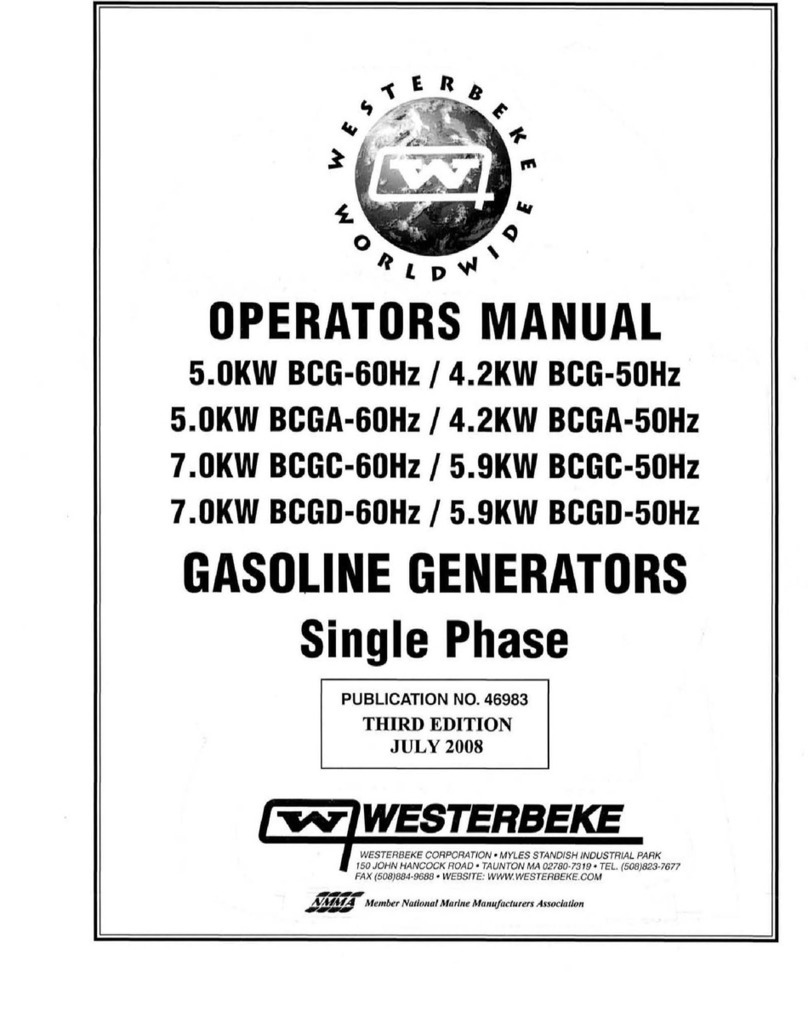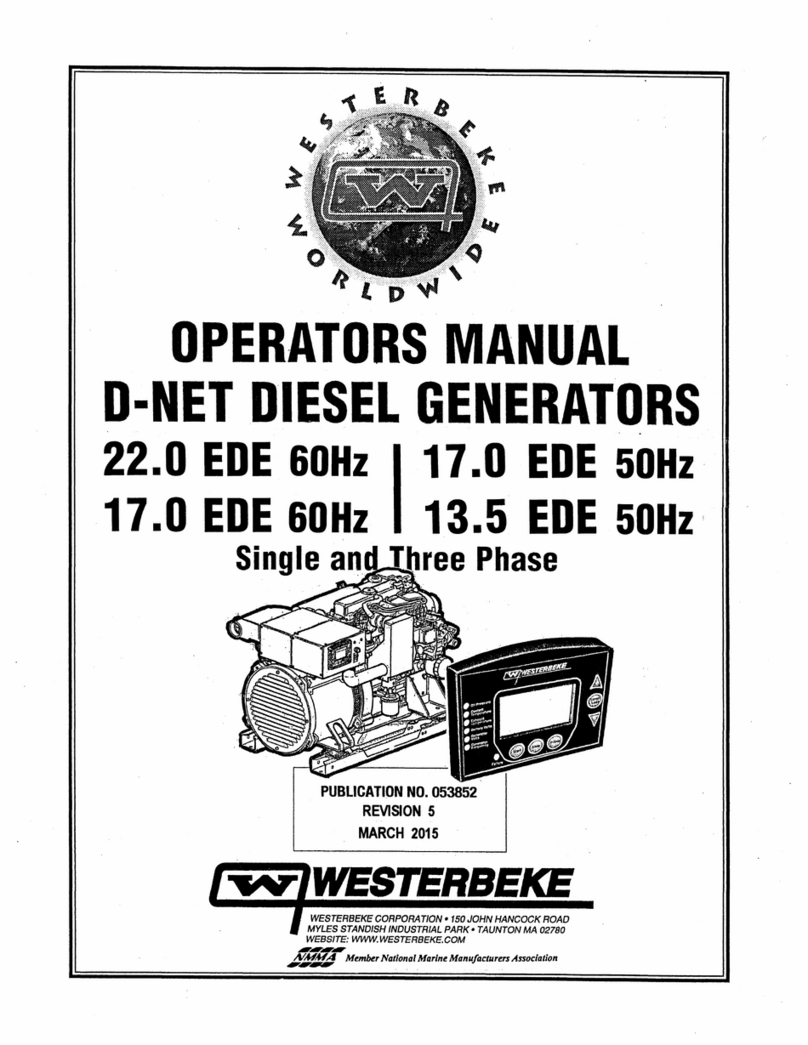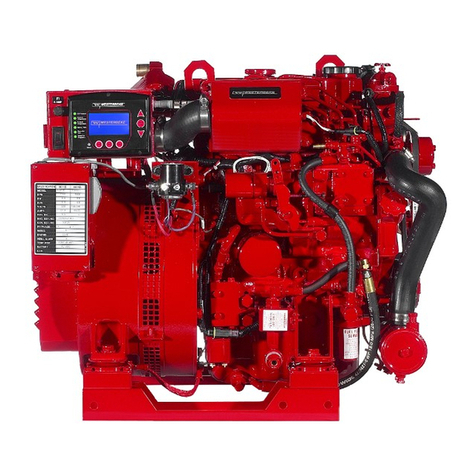
SAFETY PRECAUTIONS
The following symbols appear
in
this manual to call
attention
to
and emphasize conditions potentially
dangerous to the operator.
nWARNINGjI
The above symbol
is
used in the manual to warn of
possible serious personal injury orloss of
life.
ICAUTIONI
The above symbol
is
used in the manual to caution
personnel of possible damage to equipment.
Read
the manual carefully and thoroughly before at-
tempting
to
operate the equipment. Know when
dangerous conditions can exist and take necessary
precautions to protect personnel and equipment.
Fuels, exhaust gases, batteries, electrical equipment,
and moving and hot parts
are
potential hazards that
could resutt in serious personal injury or death. Follow
recommended procedures carefully.
Always operate bilge blowers for at least five minutes
before starting a gasoline-fueled engine; ensure no
gasoline fumes are present before starting.
• prevent Electric Shock
Shut off electric power before accessing electrical
equipment.
Use
insulated mats whenever working on electrical
equipment.
Make sureyourclothing
is
dry, notdamp (particular-
ly
shoes), and keep your skin surfaces dry when
handling electrical equipment.
Remove wristwatch and jewelry when working on
electrical equipment.
Do
not connect utility shore power to vessel's
AC
Circuits, except through a ship-to-shore double-
throw transfer switch. Damage to vessel's
AC
gen-
erator may resutt Hthis
is
not done.
Be
extremely careful when working on electrical
components. High voltage can cause injury or
death.
• Exhaust Gases
Are
Toxic
Ensurethatthe exhaust systemisadequateto expel
gases discharged from the engine. Check exhaust
system regularly for leaks and make sure the
ex-
haustmanifolds
are
securelyattached and nowarp-
ing exists.
Be
sure the unit and its surroundings
are
well-ven-
tilated.
15.0KWBTDA 1
•
Use
Extreme Care When Handling Engine
Fuel
(A
constant danger
of
explosion
or
fire exists)
Do not fill fuel tank(s) while the engine
is
running.
Do
notsmoke oruse
an
openflame nearthe engine
orthe fuel tank.
•
Do
Not Atter or Modify the
Fuel
System
Be
sure all fuel supplies have a positive shut-off
valve.
Be
certain fuel linefittings are adequatelytightened
and free of leaks.
Makesure afire extinguisher
is
installed nearby and
is
properly maintained.
Be
familiar with its proper
use. Extinguishers rated
ABC
by the NFPA
are ap-
propriate for
all
applications encountered
in
this
environment.
• Use Extreme Care When Servicing Batteries
Wear rubber gloves, a rubber apron, and eye
protection when servicing batteries.
Lead acid batteries emit hydrogen, a highly-ex-
plosive gas, which can be ignited by electrical
ar-
cing or by a lighted cigarette, cigar, or pipe.
Do
not
smokeorallow
an
openflame nearthe battery being
serviced. Shut off all electrical equipment
in
the
vicinity to prevent electrical arcing during servicing.
• Ayoid
MOYing
parts
Do
not service the unit while the unit is running;
if
a
situation arises
in
which it is absolutely necessary
to make operating adjustments, use extreme care
toavoid moving parts and hot exhaust system com-
ponents.
Do
notwearlooseclothing orjewelrywhen servicing
equipment; avoid wearing loose jackets, shirts or
sleeves, rings, necklaces, orbraceletsthat might
be
caught in moving parts.
Make sure all attaching hardware is properly
tightened. Keep protective shields and guards in
their respective place
at
all
times.
Do
not check fluid levels or the drive-belt's tension
while the unit
is
operating.
Do
not work on the equipment when mentally or
physically incapacitated by fatigue.
Westerbeke Generators

